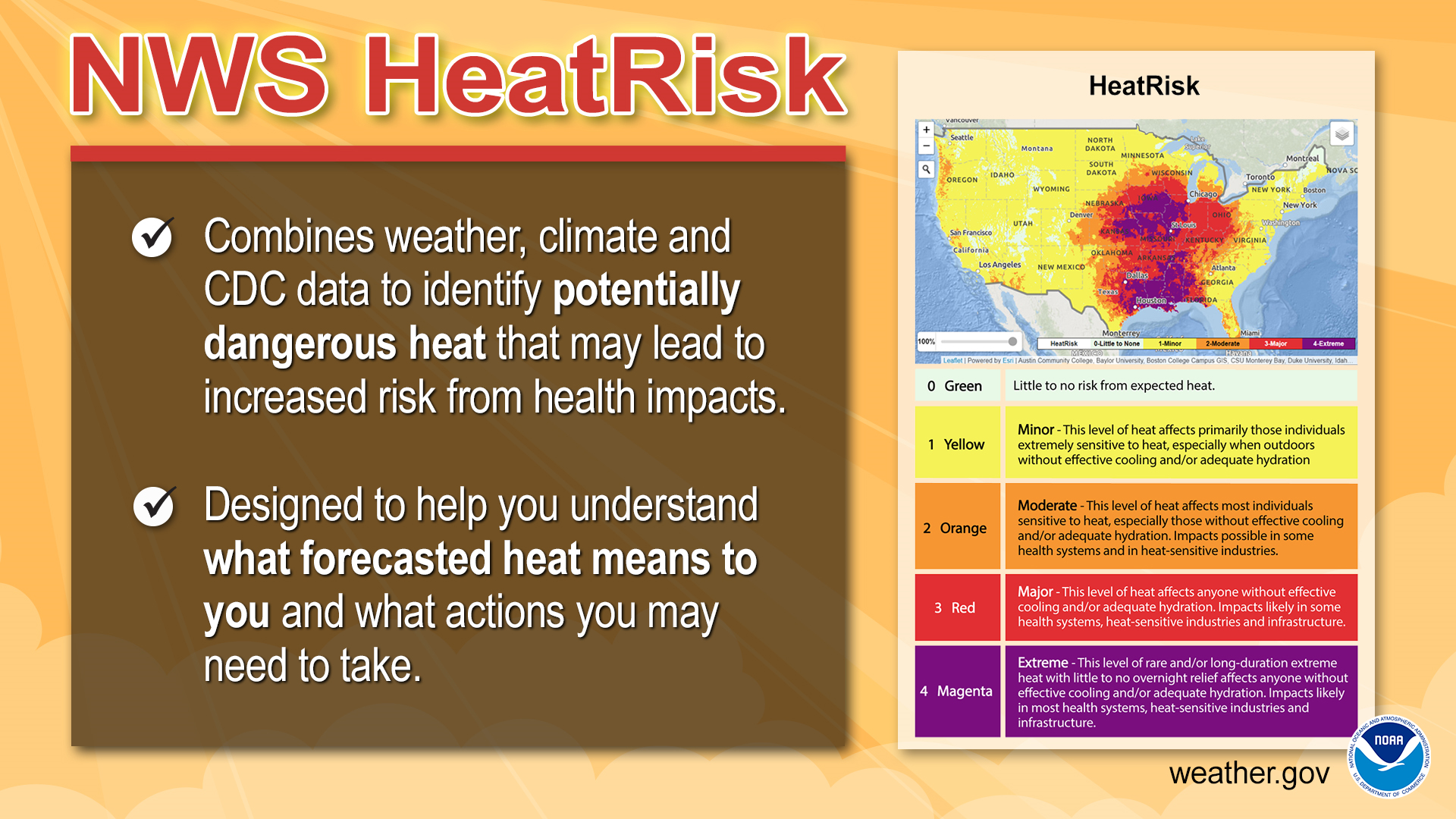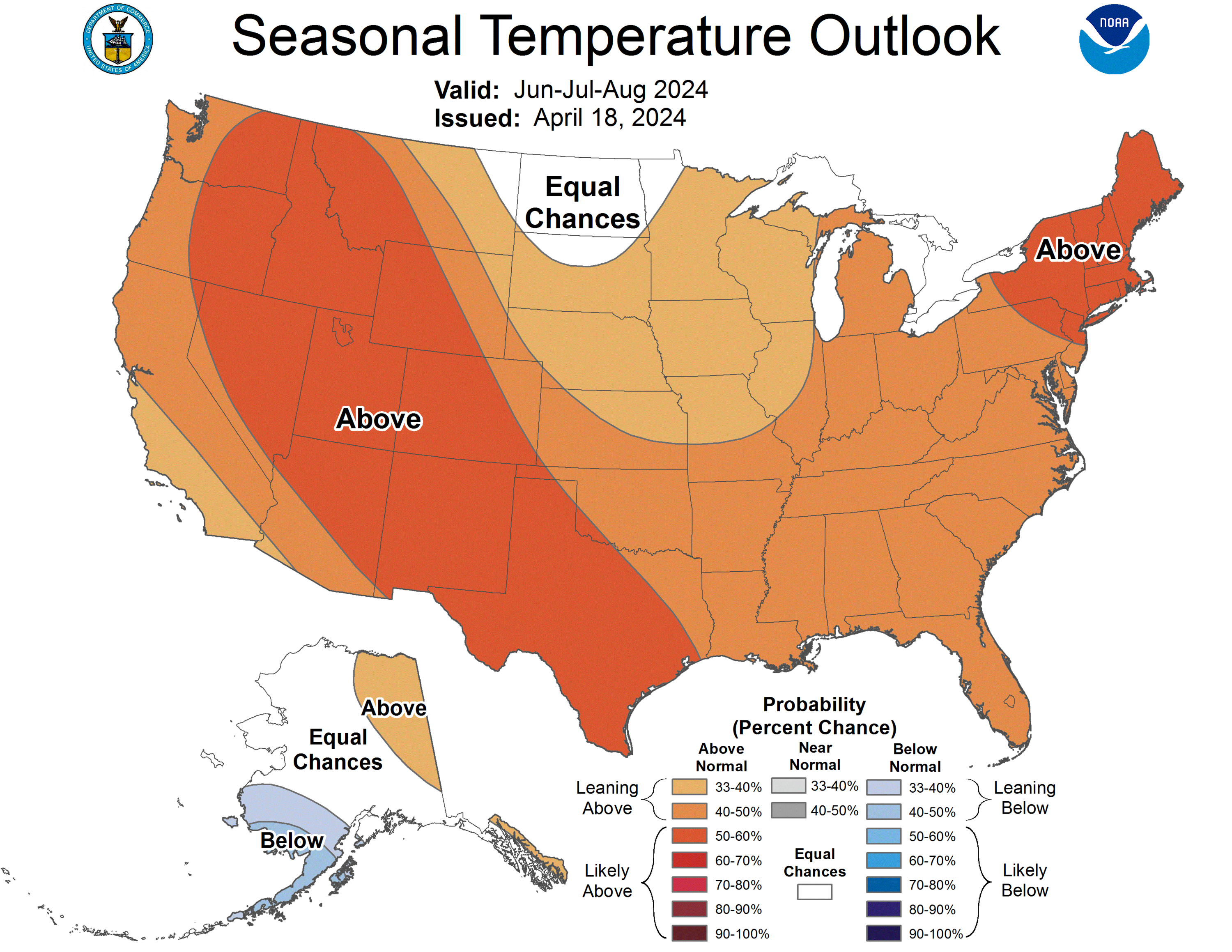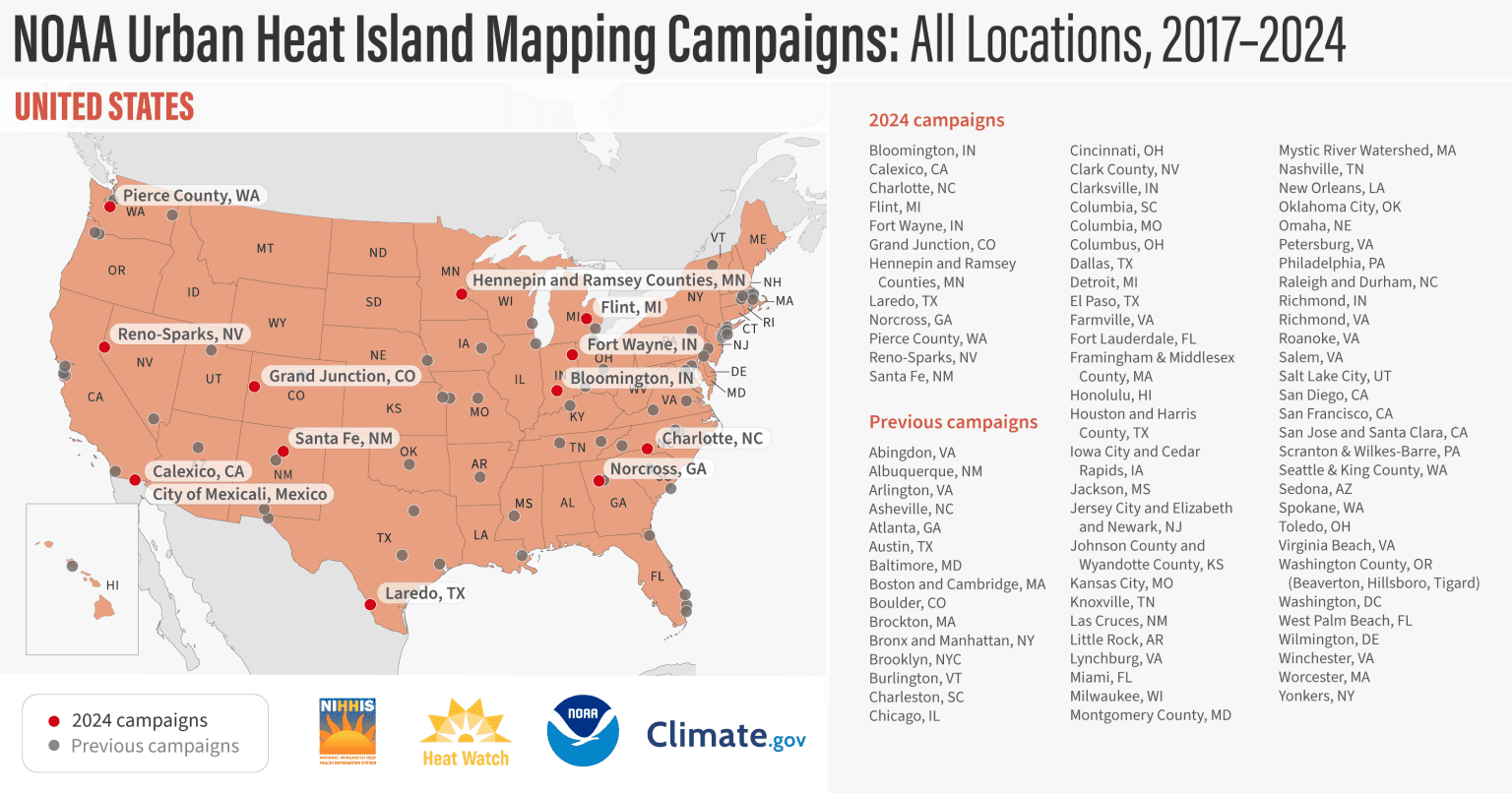Extreme Heat and Health Impacts and Preparedness for Summer 2024
- By Amber Liggett
- May 7, 2024
Amber Liggett, MSEM
When I think of the summer, there are so many things that come to mind. Vacations, outdoor activities, ice cream, and staying cool! Every year, there are more and more days where staying cool is a major summertime concern. In fact, according to the National Oceanic & Atmospheric Administration (NOAA), 2023 was the warmest year in global temperature records dating back to 1850. Some of my favorite ways to stay cool are lounging at pools and being mindful of how much time I spend in direct sunlight without water or air flow.
It is important to monitor how your body feels in the heat. According to the U.S. Centers for Disease Control and Prevention (CDC), extreme heat caused more emergency department visits associated with heat-related illnesses in May – September 2023 than previous years, especially among males ages 18-64. Some of the adverse health impacts due to extreme heat include respiratory and cardiovascular illnesses, heat stress, and can even lead to death.

Examples of populations at higher risk of exposure to adverse climate-related health threats are shown along with adaptation measures that can help address disproportionate impacts. (Source: NCA4)
Populations at highest risk include older people, children and adolescents, persons with preexisting health conditions, pregnant women, outdoor workers, people with limited access to cooling resources, and people living in low-income communities.
So, what actions can you take to prepare for extreme heat this summer?

Overview of the NWS experimental HeatRisk tool website for the contiguous U.S., where NWS forecasts are combined with CDC heath-heat data to identify potentially dangerous heat. (Source: NOAA)
For starters, there are several tools available to help assess your risk to extreme heat and its impact on your health, such as HeatRisk. The National Weather Service (NWS) and the CDC collaborated on the HeatRisk tool and recently expanded its availability to include the entire contiguous U.S. This tool helps determine the risk that excessive heat will pose on human health based on the current forecast. It provides information and guidance for those who are vulnerable to heat and may need to take extra precautions for health when temperatures rise. HeatRisk complements two established NWS heat forecast products for heat stress: heat index and wet-bulb globe temperature.

The Climate Prediction Center Seasonal temperature outlook for June – August 2024 shows the probability of regions seeing above-normal, near-normal and below-normal temperatures. (Source: NOAA)
You can also stay on top of the seasonal temperature outlook and daily weather forecast. The NOAA Climate Prediction Center’s seasonal temperature outlook for June-August 2024 shows that most areas in the U.S. are expected to experience warmer-than-average temperatures, particularly in the Northeast and Western U.S.

Federal and local partners will work with community scientists to map urban heat islands in 14 U.S. communities this summer. (Source: NOAA)
Lastly, you can get involved with educational and action-based activities. The American Red Cross has an extreme heat safety checklist that you can download in multiple languages to help with preparedness. There are also summer 2024 citizens science opportunities to map urban heat islands in: Bloomington, Indiana; Calexico, California; Charlotte, North Carolina; Flint, Michigan; Fort Wayne, Indiana; Grand Junction, Colorado; Hennepin and Ramsey Counties, Minnesota; Laredo, Texas; Pierce County, Washington; Reno and Sparks, Nevada; Santa Fe, New Mexico; and Unincorporated Norcross, Georgia. This mapping campaign has been going on since 2017. You can access data for past campaigns and learn how to apply for your city to conduct a campaign here.
